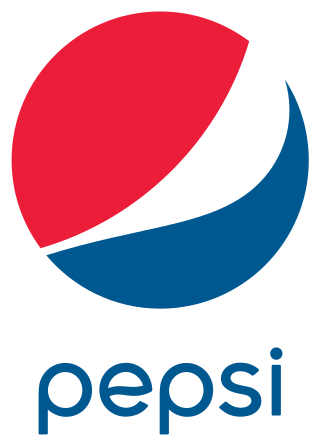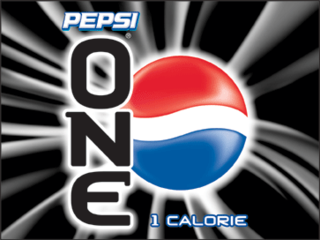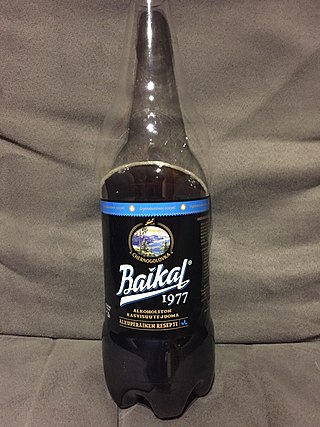
Cola is a carbonated soft drink flavored with vanilla, cinnamon, citrus oils, and other flavorings. Cola became popular worldwide after the American pharmacist John Stith Pemberton invented Coca-Cola, a trademarked brand, in 1886, which was imitated by other manufacturers. Most colas originally contained caffeine from the kola nut, leading to the drink's name, though other sources have since been used. The Pemberton cola drink also contained a coca plant extract. His non-alcoholic recipe was inspired by the coca wine of pharmacist Angelo Mariani, created in 1863.

Pepsi is a carbonated soft drink manufactured by PepsiCo. Originally created and developed in 1893 by Caleb Bradham and introduced as Brad's Drink, it was renamed as Pepsi-Cola in 1898, and then shortened to Pepsi in 1961.

The Pure Food and Drug Act of 1906, also known as Dr. Wiley's Law, was the first of a series of significant consumer protection laws which was enacted by Congress in the 20th century and led to the creation of the Food and Drug Administration. Its main purpose was to ban foreign and interstate traffic in adulterated or mislabeled food and drug products, and it directed the U.S. Bureau of Chemistry to inspect products and refer offenders to prosecutors. It required that active ingredients be placed on the label of a drug's packaging and that drugs could not fall below purity levels established by the United States Pharmacopeia or the National Formulary.

Pepsi One, corporately styled PEPSI ONE, was a sugar-free cola, marketed by PepsiCo in the United States as an alternative to regular Pepsi and Diet Pepsi.

Crystal Pepsi was a clear cola soft drink made by PepsiCo. It was initially released in the United States and Canada from 1992 to 1994. Online grassroots revival efforts prompted brief re-releases throughout the mid-2010s. It was briefly sold in the United Kingdom and Australia.

Diet or light beverages are generally sugar-free, artificially sweetened beverages with few or no calories. They are marketed for diabetics and other people who want to reduce their sugar intake.

Tab was a diet cola soft drink produced and distributed by The Coca-Cola Company, introduced in 1963 and discontinued in 2020. The company's first diet drink, Tab was popular among some people throughout the 1960s and 1970s, as an alternative to Coca-Cola. Several variations were made, including a number of fruit-flavored, root beer, and ginger ale versions. Caffeine-free and clear variations were released in the late 1980s and early 1990s.

Pepsi Max is a low-calorie, sugar-free cola, marketed by PepsiCo as an alternative to Pepsi and Diet Pepsi. Pepsi Max is still available primarily in Asian and European markets. While Pepsi Max was released in April 5, 1993, it was first available on store shelves in the United States in 2007.

OK Soda is a discontinued soft drink created by The Coca-Cola Company in 1993 that courted the American Generation X demographic with unusual advertising tactics, including neo-noir design, chain letters and deliberately negative publicity. After the soda did not sell well in select test markets, it was officially declared out of production in 1995 before reaching nationwide distribution. The drink's slogan was "Things are going to be OK."

A&W Cream Soda is a cream soda carbonated soft drink introduced by A&W Root Beer in 1986.

Diet Pepsi is a diet carbonated cola soft drink produced by PepsiCo, introduced in 1964 as a variant of Pepsi with no sugar. First test marketed in 1963 under the name Patio Diet Cola, it was re-branded as Diet Pepsi the following year, becoming the first diet cola to be distributed on a national scale in the United States. In the 1960s and 1970s, its competition consisted of the Coca-Cola Company's now-discontinued Tab. The United States represents the largest single market for Diet Pepsi.

Sun Drop is a citrus-flavored soft drink produced by Keurig Dr Pepper with a yellowish-green color. Among soft drinks, it is known for its high caffeine content. Orange juice is an ingredient in the drink, and remaining pulp matter from the orange juice provides some of the soft drink's taste and appearance. Sun Drop competes primarily against the Coca-Cola Company's Mello Yello and PepsiCo's Mountain Dew.

Like Cola was a cola soft drink, introduced by the 7 Up company, that appeared in the American market in 1982. Its slogan was "Made From The Cola Nut." Like Cola was one of the first attempts at a low-caffeine cola, containing 1% caffeine. It was packaged in a red and blue can. A diet version was also available, with the color scheme reversed. Like Cola was also packaged in 1 pint clear bottles embossed with shooting stars.
Enviga is a Nestea carbonated canned green-tea drink. Enviga is a trademark of Nestlé licensed to Beverage Partners Worldwide, a joint-venture between The Coca-Cola Company and Nestlé. It is available in three flavors: Green Tea, Tropical Pomegranate, and Mixed Berry. According to Coca-Cola, Enviga burns 60 to 100 calories per three 12-oz.(330 ml) cans due to its high EGCG and caffeine content. This is disputed by some researchers and public advocates.
Energy Brands, also doing business as Glacéau, is a privately owned subsidiary of The Coca-Cola Company based in Whitestone, Queens, New York, that manufactures and distributes various lines of drinks marketed as enhanced water. Founded in May 1996 by J. Darius Bikoff with an electrolyte enhanced line of water called Smartwater, Energy Brands initially distributed its products to health food stores and independent retailers in the New York area. Adding Fruitwater and VitaminWater to its line in 1998 and 2000, respectively, the company expanded to nationwide distribution in the early 2000s.
Tab Clear was a variation of Tab. It is Coca-Cola's contribution to the short-lived "clear cola" movement during the early 1990s. It was introduced in the United States on December 14, 1992, in the United Kingdom a month later and in Japan in March 1993 to initially positive results. Tab Clear was, however, discontinued after only a short time of marketing in 1994. Unlike most other "clear" soft drinks, Tab Clear contained caffeine and, according to the company, had the flavor of cola.

Blue Sky Beverage Company was a beverage company that produced soft drinks and energy drinks. It is a wholly owned subsidiary of the Monster Beverage Corporation. The company was established in Santa Fe, New Mexico, in 1980, where it remained until it was purchased by Monster in 2000. Coca-Cola North America took ownership of Blue Sky Sodas, Hansen’s Juice Products, Hansen’s Natural Sodas, Hubert’s Lemonade, Peace Tea and other non-energy drink brands as part of Coke’s partnership with Monster Beverage Corp on Jun 12, 2015. Blue Sky Beverage Company now operates out of Corona, California. The southwestern look and feel of the artwork on the soda cans is reminiscent of the company's roots in New Mexico.

Pepsi Zero Sugar, is a zero-calorie, sugar-free, formerly ginseng-infused cola sweetened with aspartame and acesulfame K, marketed by PepsiCo. It originally contained nearly twice the caffeine of Pepsi's other cola beverages. Before a recipe change in late 2022, Pepsi Zero Sugar contained 69 milligrams of caffeine per 355 mL (12.5 imp fl oz), versus 36 milligrams in Diet Pepsi.

Baikal is a Soviet, non-alcoholic beverage of dark-brown colour. The beverage's basis is water, but it also contains extracts of natural herbs, sugar, citric acid, and carbon dioxide. The natural herbs and extracts utilized typically include black tea extract, Siberian ginseng, cardamom oil, eucalyptus oil, lemon oil, liquorice, St. John's wort and laurel.



















